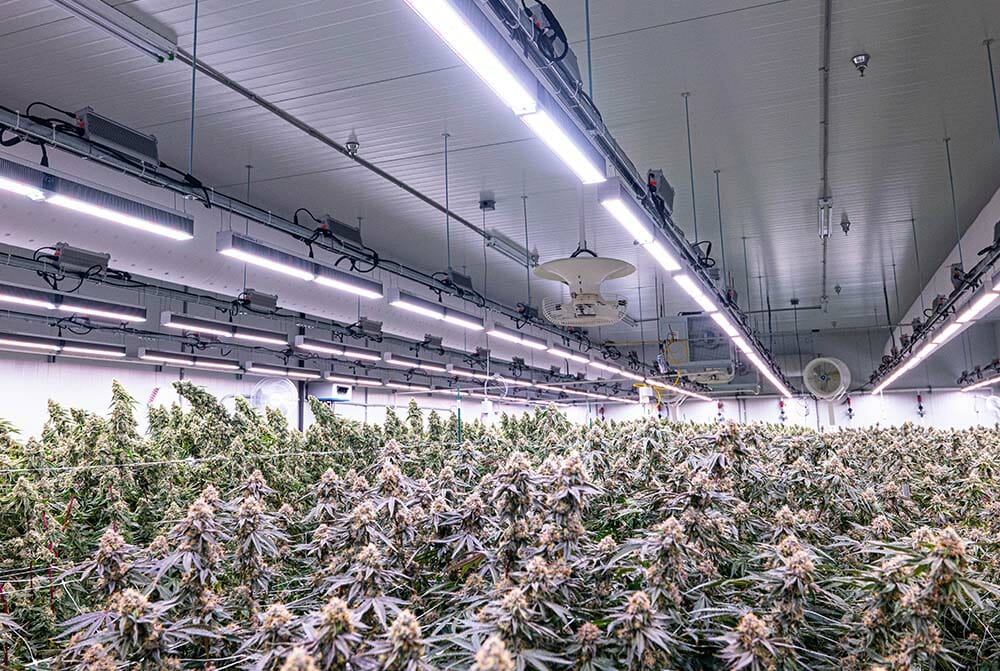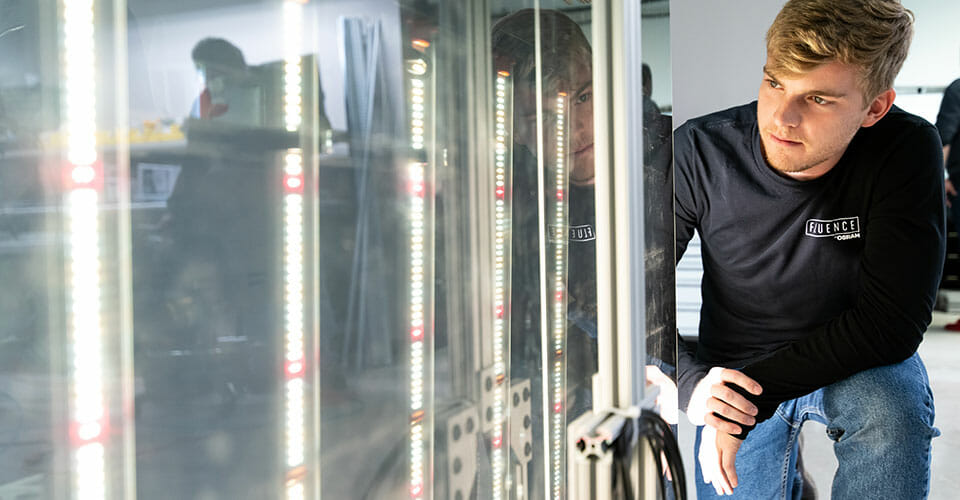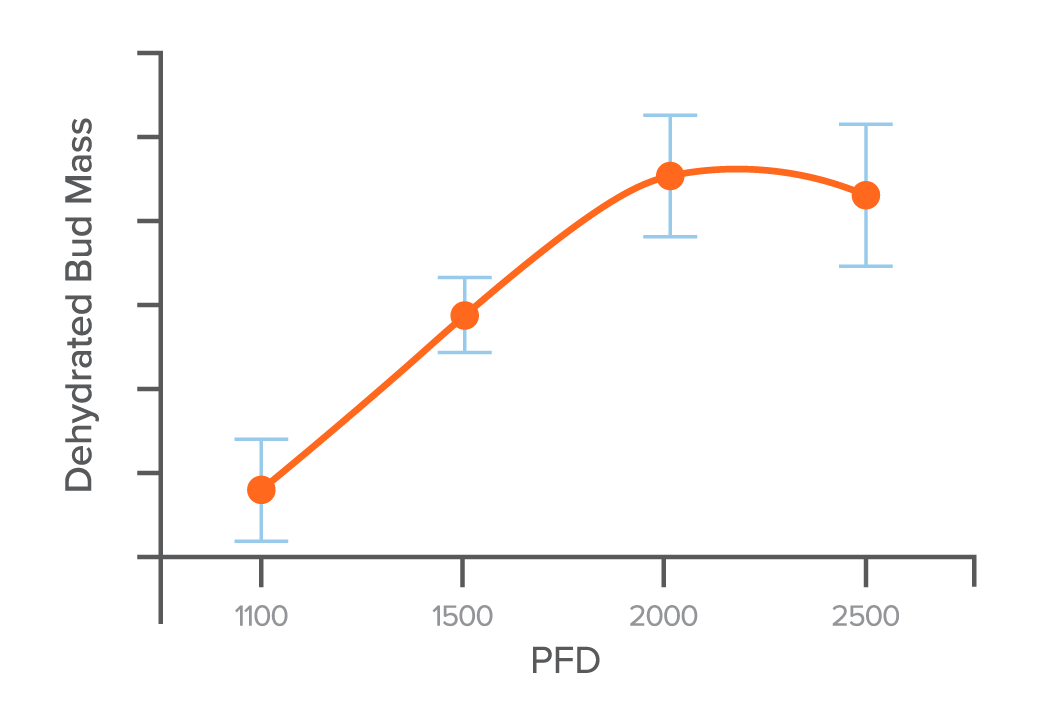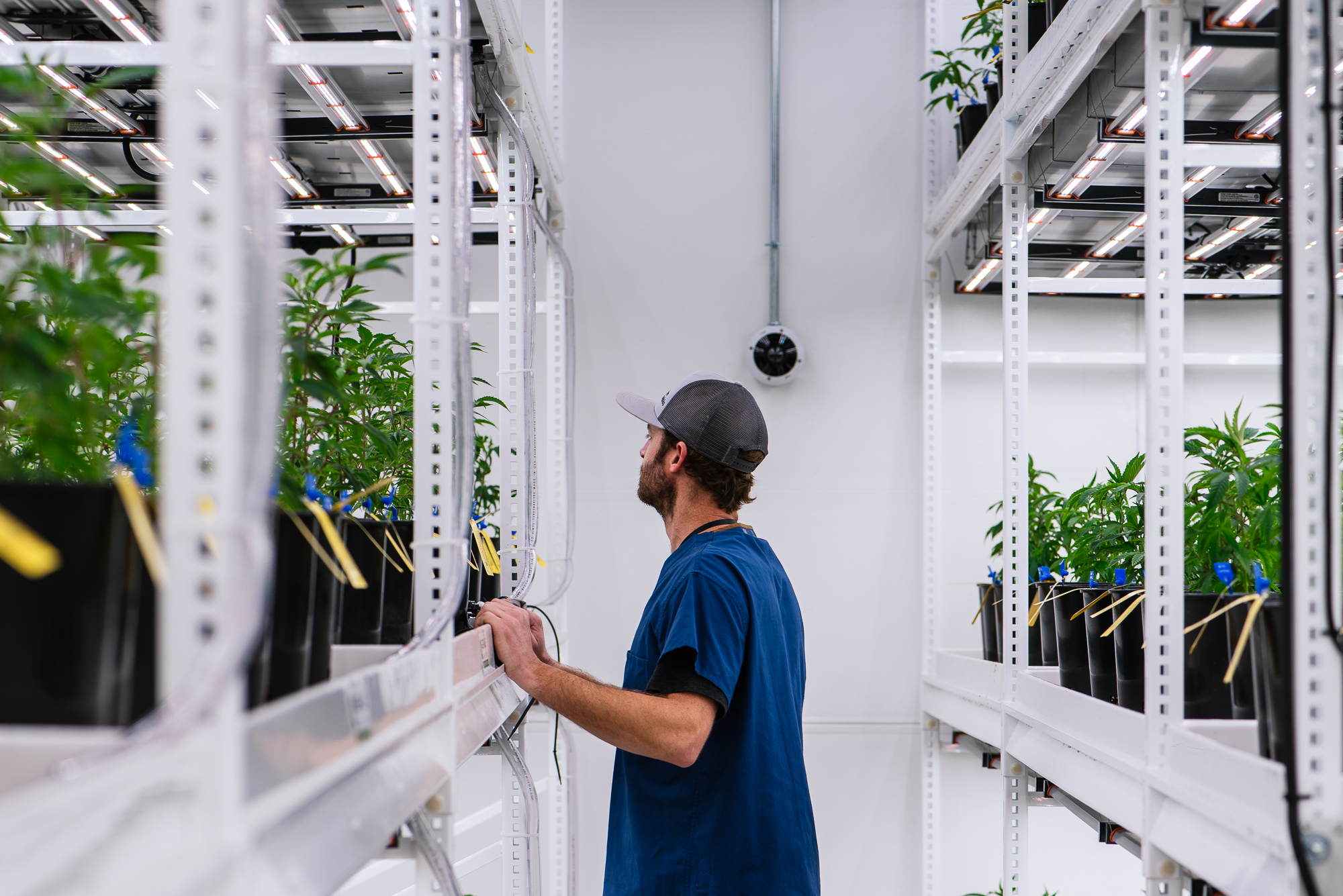
18 Apr Cannabis Light Intensity
Do you ever get so focused in your own world that you kind of forget, not everybody knows what you know? This happens to me all the time with Fluence’s cannabis research. We addressed some of the most fundamental cannabis lighting questions like spectrum and intensity back in 2020, and I take it for granted that everybody must know about these results. This isn’t out of hubris or arrogance, it’s more that we’re moving quick, so when we finish a study, we’ll sometimes publicize the results once, figure everybody that was interested heard us, and then move on to the next thing!
I mention all this because there are cannabis growers out there that perceive there to be little, if any, clear research on optimal light intensities for cannabis flower production. This makes me feel like I’ve failed the industry a little bit; we (Fluence Research) thoroughly investigated light spectrum and intensity response (spoiler: they’re not mutually exclusive!!) back in 2020 and figured out at what PPFD you start to see diminishing returns, at what PPFD plant response plateaus, and what we think needs to be done in cultivation to potentially push the plants even harder… even if it’s wildly impractical to do so.

Summary results on cannabis light intensity
Cutting to the chase: yield response is clearly linear up to 1500 µmol·m-2·s-1; for every 1% more light you add, you get 1% more plant back. From 1500 µmol·m-2·s-1 up to about 1850 µmol·m-2·s-1, we begin to see diminishing returns, but generally the response is still very good, and it is economically still very good for a grower to be investing in adding light to the crop in this range, given the high market value of cannabis. On average, we find that yield response plateaus at PPFD’s around 2100 µmol·m-2·s-1.

About the Research
We derived these high-level takeaways from two studies. The first was a 2-factor study investigating the interaction of light quality (Fluence’s R4, R6, R8, and R4+FR spectra) and intensity (1100 µmol·m-2·s-1 and 1500 µmol·m-2·s-1). Three cultivars (a type 1, type 2, and type 3) were grown in this trial and we saw a very clear trend that yield was directly proportional to PPFD at this range.
In the second study, we used only the R4 spectrum, and ran several light intensities maxing out at 2500 µmol·m-2·s-1. We expected that the 2500 µmol·m-2·s-1 treatment would fry the plants, and we only went that high for the sake of having the data point and seeing at what PPFD plants start to die. What happened was that, of the three cultivars we were testing, one of them (the type 2) continued its linear yield response up to 2500 µmol·m-2·s-1, and the other two cultivars plateaued around 2100 µmol·m-2·s-1!

Also an interesting note, in this second study, the plants down at 1500 µmol·m-2·s-1 under-performed compared to what we had seen in the first study. This was initially puzzling, but made sense once we looked at the environmental data from the room. We implemented all of our light intensity treatments in one production environment to optimize the experimental design, but in doing so, we weren’t able to manage the massive humidity load we put on the room by driving plant transpiration with super high light intensities.
All this to say, although we saw two of our three cultivars plateau in yield response around 2100 µmol·m-2·s-1, it might be possible to push plant yield even higher with PPFD if you can keep the rest of the environment in balance! This is kind of crazy; no other horticultural plant comes anywhere near this. Moreover, these PPFD’s are so high already, that although we theoretically could upgrade our environmental infrastructure to manage greater humidity loads and run another experiment, the practical reality of doing so is unrealistic for us as a research group, and even further out of the question for a commercial production facility.
Conclusion
So there you go! I hope this was informative and interesting to anyone out there that hasn’t already heard this story from us, or for anybody that wanted to hear it again. As always, questions and discussion are more than welcome, not only about this topic, but if you have other questions about cannabis lighting!

DR. DAVID HAWLEY
Lead Scientist
Dr. David Hawley leads the scientific research initiative at Fluence as the company’s principal scientist. His experience in controlled environment systems, horticultural lighting and cannabis metabolome naturally underpins Fluence’s mission to drive industry-leading lighting research to explore the interaction between light and life.


